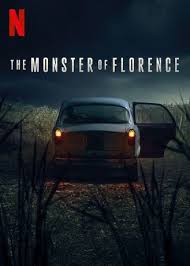The Monster of Florence: Unraveling an Italian Mystery

Introduction
The Monster of Florence is a name that evokes a chilling legacy of violence and mystery in Italy’s history. This serial killer, responsible for a string of murders between 1968 and 1985, has left an indelible mark on the region of Tuscany, particularly near Florence. The significance of this case lies not only in its macabre history but also in its intricate web of investigations that have puzzled detectives and criminologists for decades. The ongoing fascination with the case has recently gained new attention due to renewed media coverage and advancements in forensic technology.
Details of the Murders
The series of murders typically involved young couples who were attacked in rural areas. The first attack occurred in 1968, and the subsequent killings showcased a pattern that suggested a chilling method and motive. The victims were often found with their intimate clothing removed, leading authorities to believe that the assailant had a sexual motive. Over the years, a number of suspects have emerged, and various theories have circulated about the killer’s identity, including suggestions of organized crime involvement and psychological profiling.
The Investigations
Investigations into the Monster of Florence case have been hampered by a lack of physical evidence, as well as missteps by law enforcement. The case saw various detectives come and go, with efforts often stymied by media sensationalism and a public eager for answers. In the 2000s, a new wave of investigation emerged with the introduction of DNA testing on evidence that had remained untouched for years. This brought a glimmer of hope in identifying the elusive figure behind the moniker.
Recent Developments
In 2023, interest in the Monster of Florence was reignited by a documentary series discussing both the murders and the extensive investigations that followed. As breakthroughs in forensic science continue, there is renewed optimism that DNA technology may finally uncover the true identity of the killer who has evaded capture for so long. Additionally, Florence law enforcement has formed a special task force aimed at revisiting unsolved cases, including those perpetrated by the Monster.
Conclusion
The Monster of Florence remains a dark chapter in Italy’s history. For readers interested in true crime, this case stands as a testament to the complexities of criminal investigations and the often-elusive nature of justice. As technology advances and interest in the case continues unabated, there is hope that the truth about the Monster of Florence may finally come to light, offering closure to the families of the victims who have long awaited justice.









